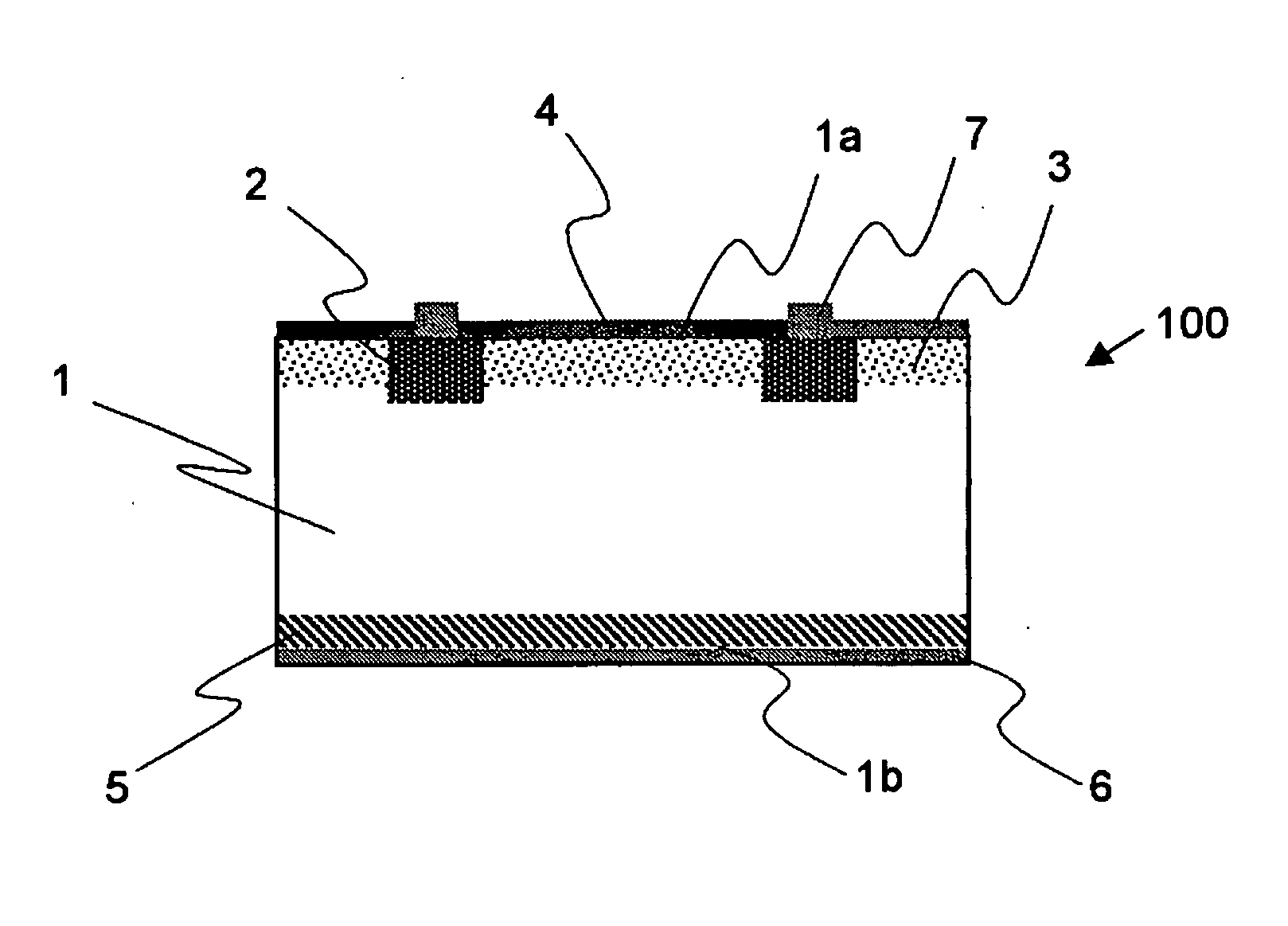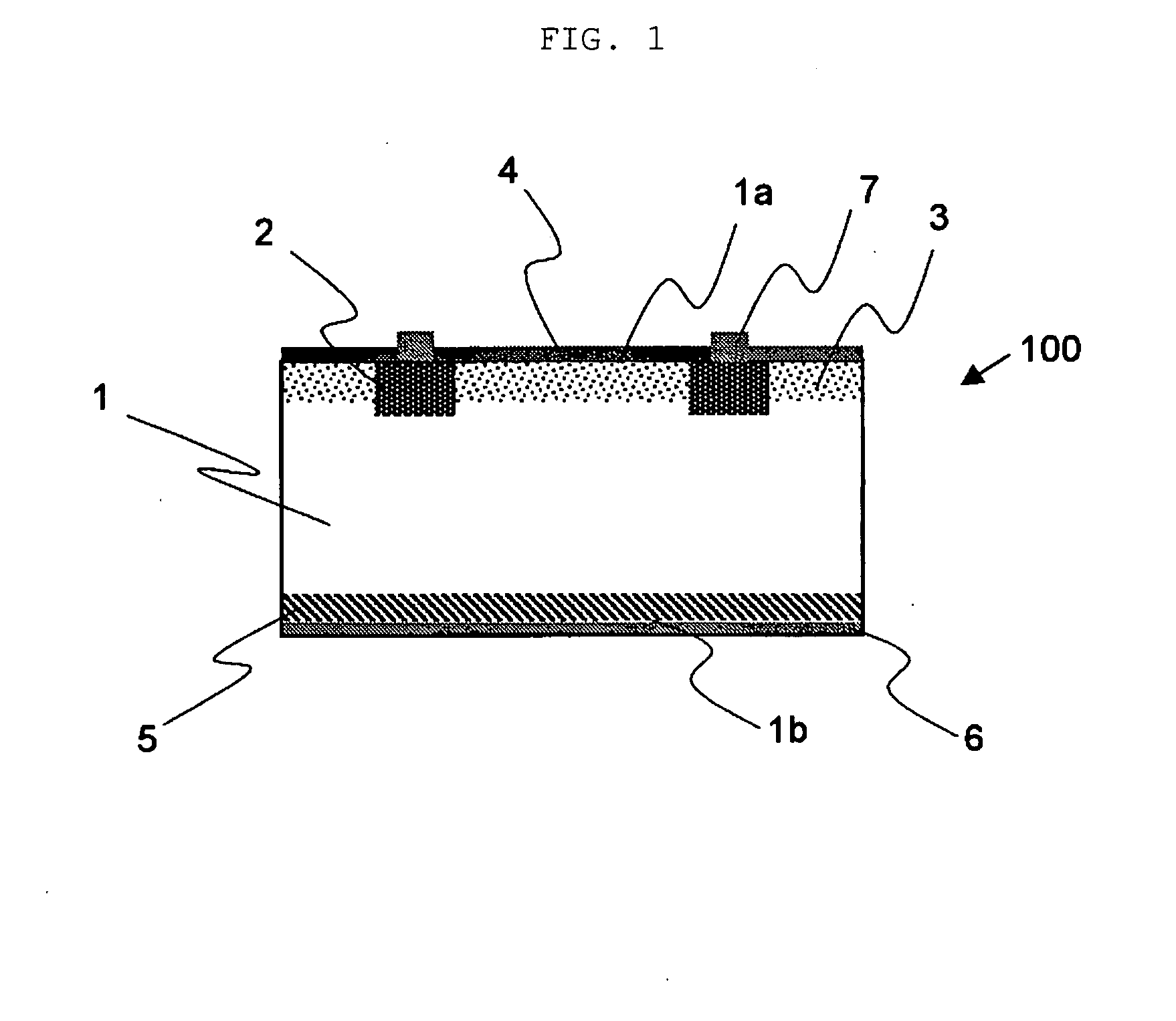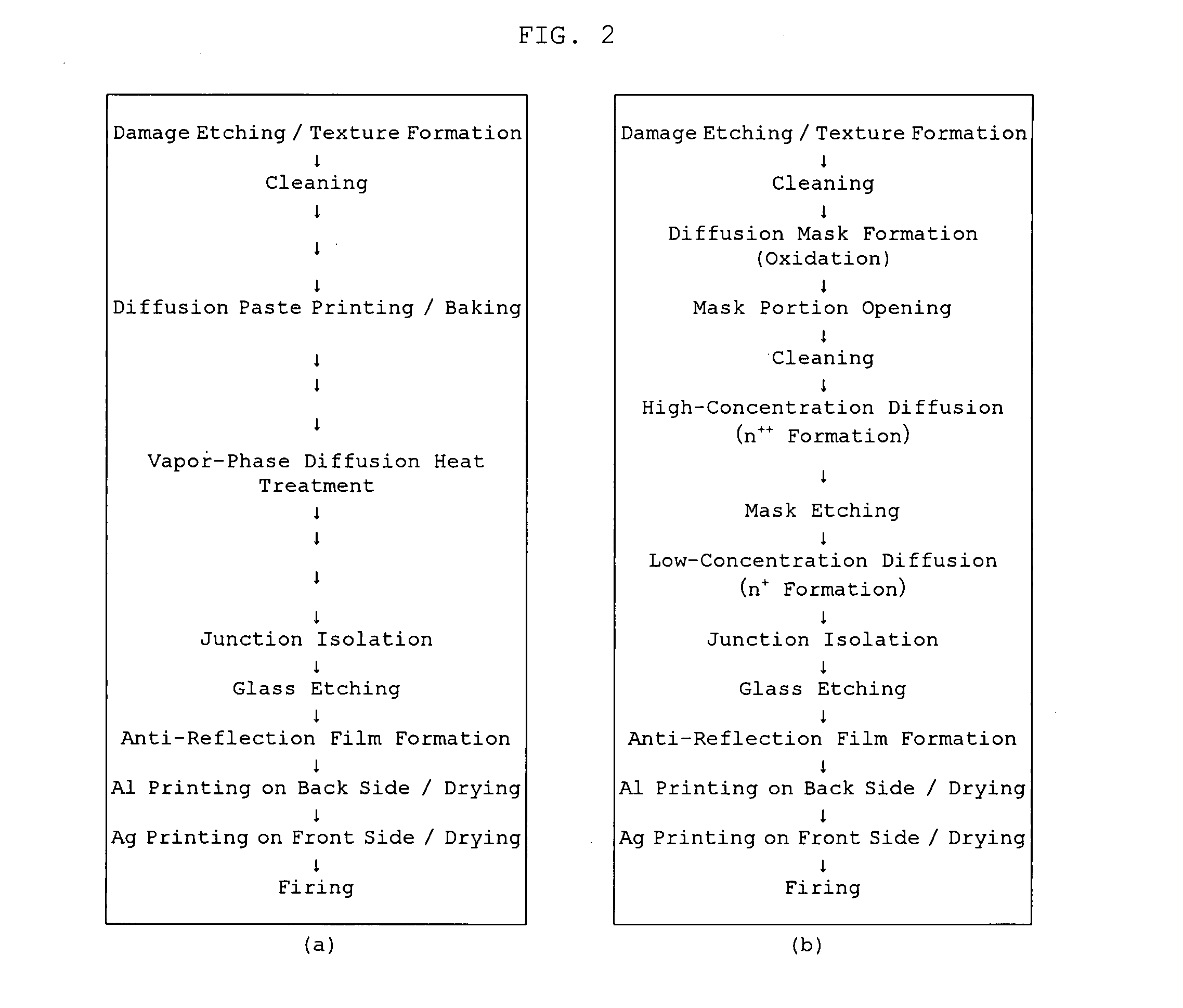Method for manufacturing solar cell and solar cell
a manufacturing method and technology for solar cells, applied in the field of manufacturing methods for solar cells and solar cells, can solve the problems achieve the effects of reducing manufacturing costs, no variation in performance, and high production yield
- Summary
- Abstract
- Description
- Claims
- Application Information
AI Technical Summary
Benefits of technology
Problems solved by technology
Method used
Image
Examples
examples 3 and 4
[0098]A low-concentration emitter layer was formed in a region printed with a diffusion paste and a high-concentration emitter layer was formed in a region subjected to only vapor-phase diffusion in accordance with the process A or B of FIG. 5 to thereby manufacture a solar cell (Examples 3 and 4). Various characteristics of the solar cell manufactured in these examples are summarized in Table 2. Incidentally, various characteristics of the solar cell of Example 2 are added for comparative purposes. In addition, spectral sensitivity characteristics (external quantum efficiency) are shown in FIG. 7.
TABLE 2Open-Short-circuitConversioncircuitcurrent densityefficiencyFillvoltage (V)(mA / cm2)(%)factorExample 30.63436.918.50.789(Process A)Example 40.63537.218.40.778(Process B)Example 20.63136.418.30.795
[0099]Both of the samples of Examples 3 and 4 subjected to the process A or B show larger values in both of the short-circuit current and the open-circuit voltage than the sample of Example ...
examples 5 and 6
[0101]A solar cell as shown in FIGS. 6(a) and (b) was manufactured.
[0102]To be specific, a gallium-doped single-crystal silicon substrate having a p-type conductivity was prepared; the substrate shows crystal orientation in the direction of (100) plane, measures 15 cm per side, and has a thickness of 250 μm and a resistivity of 0.5 Ω·cm in an as-sliced state (dopant concentration of 3.26×1016 cm−3). A damaged portion was etched by about 30 μm in total on both sides with the same process as that of FIG. 2(a) to form a texture as an anti-reflection structure on the surface.
[0103]Subsequently, after the completion of cleaning the substrate, a diffusion paste was printed to a region for forming a high-concentration diffusion layer for the purpose of forming a two-stage emitter structure on the light-receiving surface side in the same way as that of FIG. 2(a) and then, the substrate was held under a POCl3 vapor-phase diffusion source atmosphere at 880° C. for 30 minutes to subject only t...
PUM
 Login to View More
Login to View More Abstract
Description
Claims
Application Information
 Login to View More
Login to View More - R&D
- Intellectual Property
- Life Sciences
- Materials
- Tech Scout
- Unparalleled Data Quality
- Higher Quality Content
- 60% Fewer Hallucinations
Browse by: Latest US Patents, China's latest patents, Technical Efficacy Thesaurus, Application Domain, Technology Topic, Popular Technical Reports.
© 2025 PatSnap. All rights reserved.Legal|Privacy policy|Modern Slavery Act Transparency Statement|Sitemap|About US| Contact US: help@patsnap.com



